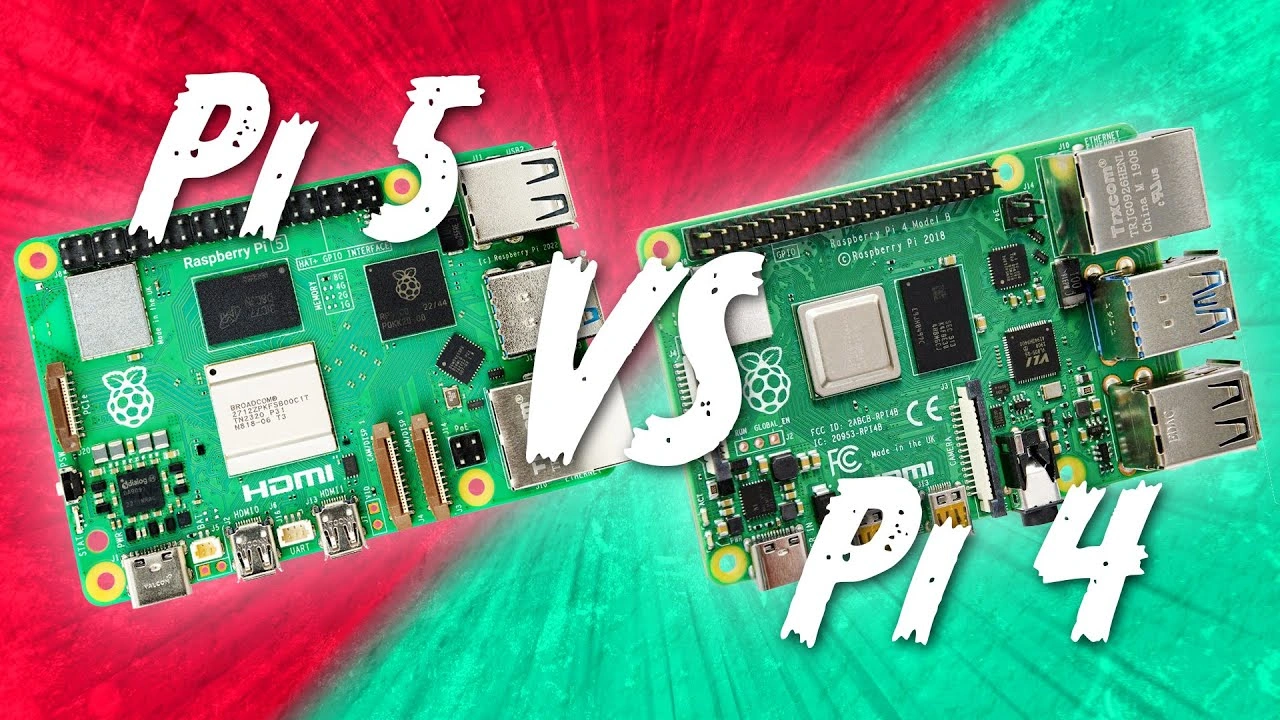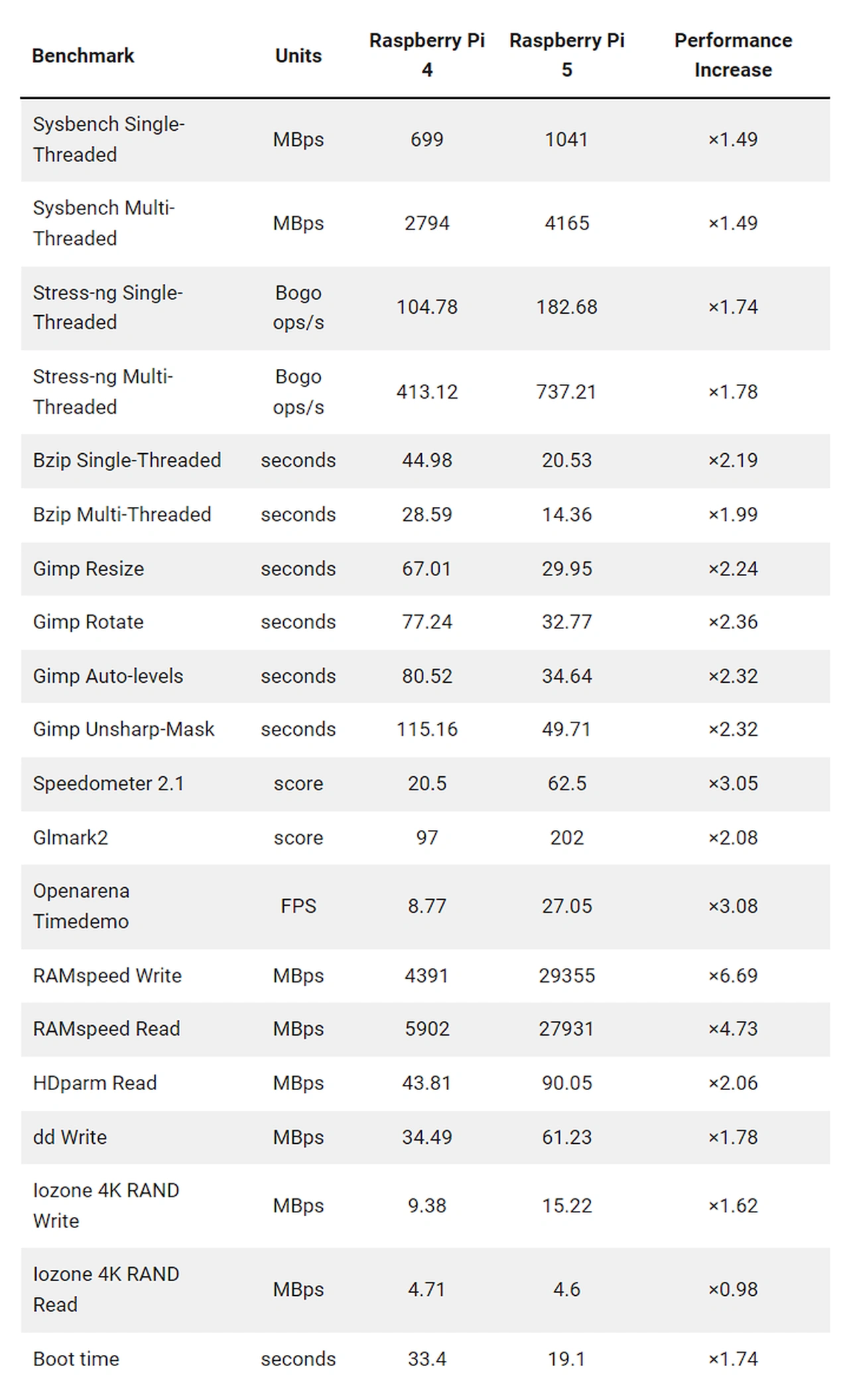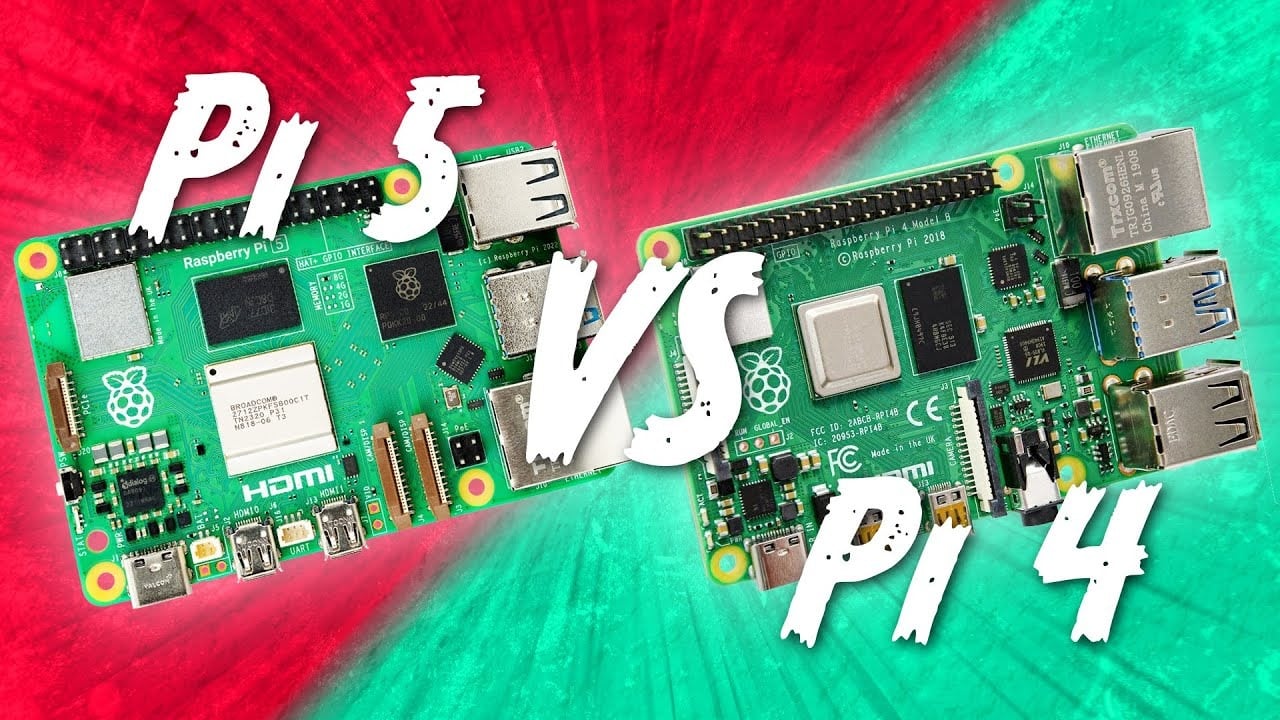
The Raspberry Pi, an innovative and cost-effective computing device, has seen a significant evolution in its performance over the years. Even though the Raspberry Pi 5 is only available to preorder and is expected to start shipping this month first Raspberry Pi 5 benchmarks have already been servicing thanks to those who’ve been lucky enough to get their hands-on the mini PC ahead of its official retail availability.
The benchmarks have been recorded by Alasdair Allan from the official Raspberry Pi team using the Geekbench 6.2. A cross-platform processor benchmark, provides scores for single-core and multi-core performance. Single-core scores measure the processing power of one CPU core, which is crucial for applications that rely mostly on a single core to process instructions. Multi-core scores, on the other hand, measure the performance when jobs are distributed across all cores of the CPU. This is relevant for heavily threaded applications such as web browsers. Together with marks provided by Core Electronics.
Raspberry Pi 5 vs Raspberry Pi 4 benchmarks
Single core performance
In terms of single-core performance, the Raspberry Pi 5 demonstrates a significant improvement over its predecessor. It showed a 2.4 times speed increase over the Raspberry Pi 4 in single-core scores, with an average score of 764 for a 4KB page size and 774 for a 16KB page size. This improvement indicates that the Raspberry Pi 5 can handle single-core applications more efficiently, leading to smoother operation and faster execution times.
Multiple core performance
The multi-core performance of the Raspberry Pi 5 also shows a marked improvement. The device showed a 2.2 times speed increase over the Raspberry Pi 4 in multi-core scores, with an average score of 1,604 for a 4KB page size and 1,588 for a 16KB page size. This suggests that the Raspberry Pi 5 can manage heavily threaded applications more effectively, offering users an enhanced browsing experience, among other benefits.
Other articles we have written that you may find of interest on the subject of the latest Raspberry Pi mini PC :
The Raspberry Pi 5, equipped with a quad-core Arm Cortex-A76 processor clocked at 2.4GHz, offers between two and three times the CPU and GPU performance of the Raspberry Pi 4. Additionally, it provides approximately twice the memory and I/O bandwidth, enhancing the overall user experience. It’s noteworthy that the Raspberry Pi 5 is the first time Raspberry Pi silicon has been used on a flagship device, marking a significant milestone in the evolution of Raspberry Pi performance.
Overclocking performance
Overclocking, which involves increasing the clock rate of a computer’s CPU or GPU beyond the factory setting, can often improve performance. When the Raspberry Pi 5’s CPU was overclocked from 2.4GHz to 3.0GHz, it resulted in a 1.2 times increase in single-core scores. However, no similar increase was observed in multi-core scores. This indicates that while overclocking can provide a performance boost in certain situations, it might not always result in a proportional improvement in all areas of performance.
Starting with the Sysbench benchmarks, which are commonly used to test CPU performance, we observe a notable increase in performance for the Raspberry Pi 5. In single-threaded performance, the Raspberry Pi 5 achieved 1041 MBps compared to the Raspberry Pi 4’s 699 MBps, a 1.49-fold improvement. Similarly, in the multi-threaded tests, the Raspberry Pi 5 recorded 4165 MBps, again a 1.49 times enhancement over the 2794 MBps of the Raspberry Pi 4.
Turning our attention to the Stress-ng benchmarks, which stress various subsystems of a computer, the Raspberry Pi 5 displayed superior performance in both single and multi-threaded scenarios. Specifically, in single-threaded tests, the Raspberry Pi 5 managed 182.68 Bogo ops/s, an improvement of 1.74 times over the Raspberry Pi 4’s 104.78 Bogo ops/s. For the multi-threaded counterpart, the Raspberry Pi 5 achieved 737.21 Bogo ops/s, surpassing the Raspberry Pi 4’s 413.12 Bogo ops/s by 1.78 times.
Bzip, a data compression tool, showcased significant gains in performance on the Raspberry Pi 5. For single-threaded compression, the task was completed in 20.53 seconds compared to the Raspberry Pi 4’s 44.98 seconds, showing a 2.19 times performance boost. Meanwhile, in multi-threaded tasks, the Raspberry Pi 5 finished in 14.36 seconds, nearly twice as fast as the Raspberry Pi 4’s 28.59 seconds.

Discussing graphic editing capabilities, using GIMP as a benchmark, the Raspberry Pi 5 outperformed its predecessor in various tasks. Resizing an image took the Raspberry Pi 5 only 29.95 seconds, a 2.24 times improvement over the Raspberry Pi 4’s 67.01 seconds. Image rotation on the Raspberry Pi 5 was completed in 32.77 seconds, which is 2.36 times faster than the Raspberry Pi 4’s 77.24 seconds. Auto-leveling and unsharp mask adjustments also saw similar gains, with the Raspberry Pi 5 being roughly 2.32 times faster in both categories.
Regarding browser benchmarks, Speedometer 2.1 scored the Raspberry Pi 5 at 62.5, marking a threefold increase over the Raspberry Pi 4’s score of 20.5. For GPU performance, using the GImark2 benchmark, the Raspberry Pi 5 scored 202, which is a significant 2.08 times improvement over the Raspberry Pi 4’s score of 97.
The Openarena Timedemo, a measure of gaming capability, recorded the Raspberry Pi 5 at 27.05 FPS, showing a considerable 3.08 times leap over the Raspberry Pi 4’s 8.77 FPS. For memory performance, RAMspeed benchmarks indicated drastic improvements for the Raspberry Pi 5. Write speeds soared to 29355 MBps, a 6.69 times jump from the Raspberry Pi 4’s 4391 MBps. Read speeds for the Raspberry Pi 5 reached 27931 MBps, 4.73 times faster than the Raspberry Pi 4’s 5902 MBps.
In disk performance, using HDparm for reading, the Raspberry Pi 5 achieved 90.05 MBps, a 2.06 times improvement over the Raspberry Pi 4’s 43.81 MBps. The dd Write benchmark, which tests the speed of writing data to a file, showed the Raspberry Pi 5 at 61.23 MBps, a 1.78 times improvement over the Raspberry Pi 4’s 34.49 MBps. However, in the Iozone 4K RAND benchmarks, which measure random read and write speeds, the Raspberry Pi 5’s read performance was slightly lesser than its predecessor, but it did manage a 1.62 times improvement in write speeds.
Lastly, an essential metric for many users, the boot time, saw the Raspberry Pi 5 starting up in just 19.1 seconds, which is a substantial 1.74 times faster than the Raspberry Pi 4’s 33.4 seconds. The Raspberry Pi 5 demonstrates significant advancements in performance across almost all benchmarks compared to the Raspberry Pi 4. Whether it’s computing, graphics, memory, or disk operations, users can expect a more robust and efficient experience with the Raspberry Pi 5.
The Raspberry Pi 5 represents a significant leap forward in terms of performance compared to the Raspberry Pi 4. Its enhanced single-core and multi-core performance, coupled with the potential performance boost from overclocking, make it a powerful tool for a wide range of applications. As the Raspberry Pi continues to evolve, users can look forward to even more powerful, versatile, and cost-effective computing solutions in the future.
Image Credit : Core Electronics
Filed Under: Hardware, Top News
Latest timeswonderful Deals
Disclosure: Some of our articles include affiliate links. If you buy something through one of these links, timeswonderful may earn an affiliate commission. Learn about our Disclosure Policy.

